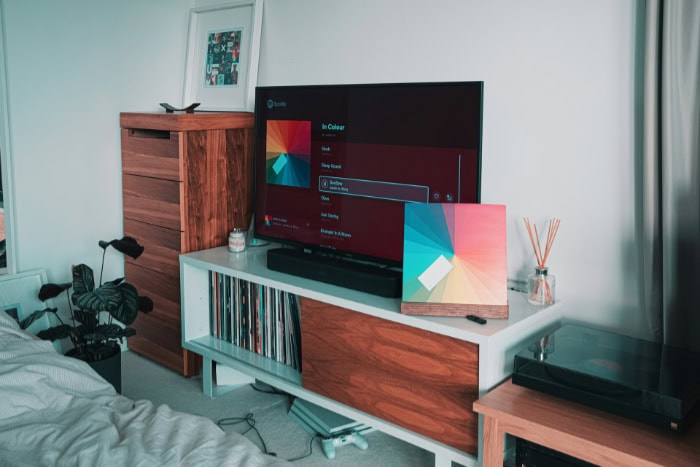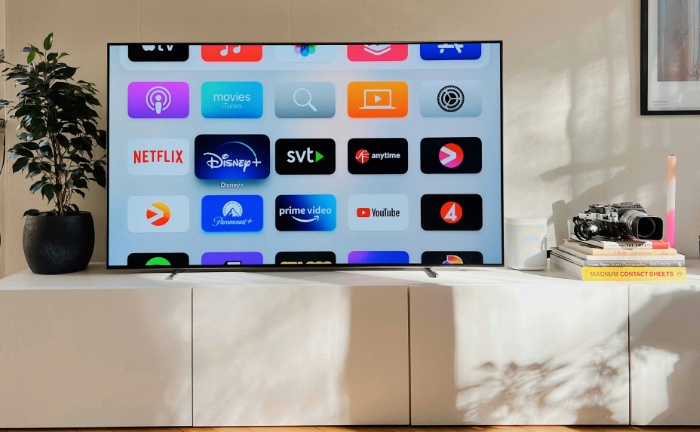What Is a Quantum Dot Display? Bringing Images to Life

From vibrant home theater systems to advanced gaming monitors, the demand for displays that deliver stunning visuals has never been higher. As the quest for better color, brightness, and energy efficiency continues, quantum dot displays have taken the spotlight as a revolutionary solution.
These displays leverage nanotechnology to create richer, more precise colors while maintaining impressive brightness and durability.
With their unique ability to elevate image quality beyond the limits of conventional LCDs, quantum dot displays are redefining visual experiences across televisions, monitors, and even emerging devices like AR/VR headsets. But what makes this technology so special, and how does it stack up against competitors like OLED?
Fundamentals of Quantum Dot Technology
Quantum dots are incredibly small semiconductor particles, typically ranging in size from 2 to 10 nanometers. To put this into perspective, a nanometer is one-billionth of a meter, making these particles nearly 10,000 times smaller than the width of a human hair.
Despite their microscopic size, these particles exhibit remarkable capabilities when it comes to interacting with light.
Their standout feature is the phenomenon of quantum confinement. This occurs when the particle’s size becomes so small that it restricts the motion of electrons within it, enhancing its optical and electronic properties.
The size of the quantum dot directly determines the color of light it emits. Smaller dots produce blue light, while larger dots emit red light.
This size-dependent property enables quantum dots to produce a wide range of precise and pure colors, unmatched by other light-emitting materials.
These extraordinary traits make quantum dots ideal for applications in display technology, where reproducing accurate colors with high clarity is paramount.
How Quantum Dot Displays Work
Quantum dot displays leverage the unique emissive properties of quantum dots to enhance color fidelity and brightness. The construction of these displays involves integrating quantum dots in either a photo-emissive or electro-emissive configuration, depending on the type of device.
Most quantum dot displays today use a photo-emissive architecture. In these designs, a conventional LED light source is paired with a quantum dot layer.
The LED backlight, typically blue, shines through a film of quantum dots, which convert the light into pure red and green colors. This combination of red, green, and blue (RGB) colors then forms the foundation of the display, allowing it to produce vivid, lifelike imagery.
This approach is widely used in QLED (quantum dot light-emitting diode) LCDs, which enhance traditional LCD panels to deliver greater color range and brightness.
On the other hand, electro-emissive quantum dot displays, such as QD-LEDs, represent a developing technology with even greater potential. In these systems, quantum dots act as the direct emissive layer, producing light when an electric current is applied.
Unlike photo-emissive configurations, electro-emissive displays don’t rely on an external light source, enabling thinner, more energy-efficient screens with higher precision. However, this type of implementation is still in its early stages due to manufacturing challenges.
Technical Advantages Over Traditional Displays

Quantum dot displays stand apart from traditional display technologies like standard LCDs and OLEDs due to their remarkable technical capabilities. These displays are engineered to deliver outstanding color accuracy, superior brightness, and extended durability, all while consuming less energy.
Superior Color Performance
Quantum dot displays are renowned for their ability to produce an incredibly wide and accurate range of colors. By leveraging the unique size-dependent light emission properties of quantum dots, these displays can produce over a billion distinct colors, offering a 50% wider color gamut compared to standard LCD displays.
This expanded gamut means that quantum dot screens can recreate colors with a richness and vibrancy that feel closer to the real world.
Another significant benefit of quantum dot technology is the purity of its spectral output. Unlike conventional LCD screens that may suffer from color bleeding or distortion, quantum dots emit highly precise wavelengths of light, ensuring that each color appears vivid and untainted by overlapping hues.
This results in more natural skin tones, sharper greens, and deeper reds, making these displays ideal for color-critical applications such as photo editing, video production, and immersive media consumption.
Brightness and Efficiency
Brightness is another area where quantum dot displays outshine their traditional counterparts. These displays are capable of achieving peak brightness levels between 1,000 and 4,000 nits, far exceeding the capabilities of most standard LCDs and rivaling or surpassing OLED displays.
What’s particularly impressive is their ability to maintain precise color accuracy even at high brightness levels, ensuring that vibrant visuals remain consistent in well-lit environments or during scenes with high contrast.
Quantum dot displays also stand out for their improved energy efficiency. Thanks to the ability of quantum dots to convert light more effectively, these displays consume up to 20–50% less power than standard LCDs.
By optimizing energy use without compromising on performance, quantum dot displays strike a balance between dazzling visuals and practical energy conservation, making them an excellent choice for both portable and large-format devices.
Durability
One of the most practical advantages of quantum dot displays is their durability. Unlike OLED screens, which rely on organic materials that can degrade over time and are prone to issues like burn-in, quantum dots are made from inorganic materials.
This enhances their longevity, as these materials are more resistant to wear and tear caused by prolonged use. As a result, quantum dot displays are better equipped to deliver consistent performance over their lifespan.
In addition, these displays are less susceptible to image retention, a common problem seen in OLED screens, where static images leave permanent marks over time. This durability makes quantum dot displays particularly suitable for applications where performance reliability is crucial, such as high-end televisions and professional monitors.
Comparison With Competing Display Technologies

Quantum dot displays have earned their place as a leading innovation in screen technology, but how do they stack up against other display types like OLED or emerging technologies such as Mini-LED and MicroLED? Each of these technologies brings unique strengths and limitations to the table, and understanding how they compare provides valuable insight into their applications.
QLED vs. OLED
When comparing QLED (quantum dot light-emitting diode) displays to OLED (organic light-emitting diode) displays, the most noticeable difference lies in their approach to brightness and contrast. QLED displays excel in their ability to produce high levels of brightness, making them ideal for viewing in bright environments.
They retain vivid colors and clarity even at peak brightness levels, which can range from 1,000 to 4,000 nits. This advantage over OLED stems from the quantum dots’ efficiency in converting light from the LED backlight into pure, vibrant colors.
On the other hand, OLED displays are known for their unrivaled contrast performance. Each pixel in an OLED screen emits its own light and can turn off completely to achieve perfect blacks, resulting in a level of contrast unmatched by QLED screens that rely on backlighting.
However, OLED’s reliance on organic materials introduces certain drawbacks, such as vulnerability to image retention and burn-in. Prolonged display of static images can cause permanent marks on OLED screens, whereas QLED displays, built with durable inorganic quantum dots, are immune to this issue, offering greater stability for long-term use.
Ultimately, the choice between QLED and OLED often depends on individual priorities. QLED is well-suited for bright environments and longevity, while OLED shines in delivering superior contrast and perfect black levels.
QD-OLED Hybrids
Quantum dot and OLED technologies have recently been combined to form QD-OLED hybrids, a significant advancement aimed at enhancing the strengths of both. These hybrid displays use OLED as the light source while incorporating a layer of quantum dots to improve color accuracy and brightness.
By merging the self-emissive nature of OLED with the precise color control of quantum dots, QD-OLED displays offer a balanced solution that stands out for its deep blacks, vibrant colors, and impressive brightness.
This combination eliminates some of the weaknesses present in standalone OLED or QLED displays. For example, QD-OLEDs reduce the color degradation that can occur at higher brightness levels in traditional OLEDs, while still retaining the OLED’s signature high contrast.
These hybrid systems are positioned as premium solutions for consumers seeking the best of both worlds in display technology.
Mini-LED/MicroLED Synergy
Mini-LED and MicroLED represent the next generation of backlighting technologies, and quantum dots play a pivotal role in enhancing their performance. Mini-LED displays use thousands of tiny LEDs to create local dimming zones, offering deeper contrast and better HDR performance compared to standard LCDs.
When paired with quantum dots, the color accuracy in these displays is further optimized, resulting in a wider color gamut and brighter, more vibrant imagery.
MicroLED, on the other hand, is a self-emissive technology that features microscopic LEDs capable of producing their own light and color. While it already boasts incredible brightness and efficiency, integrating quantum dots into MicroLED displays elevates their color precision to new heights.
This synergy creates an ultra-premium display option for applications demanding peak performance, such as large-format TVs or commercial displays.
By enhancing Mini-LED and MicroLED technologies with quantum dots, manufacturers are able to bridge the gap between traditional backlit displays and self-emissive options, delivering a viewing experience that balances brightness, contrast, and color fidelity.
Challenges and Limitations

While quantum dot displays deliver impressive performance and have transformed modern display technology, they are not without their challenges and limitations. From manufacturing complexities to environmental concerns, these obstacles can influence both production and consumer adoption.
Manufacturing Hurdles
One of the primary challenges in quantum dot technology lies in the manufacturing process. Producing high-quality quantum dots that are suitable for display applications requires advanced techniques and specialized materials.
Historically, cadmium-based quantum dots were favored for their superior color performance and efficiency. However, due to the environmental hazards associated with cadmium, manufacturers have shifted their focus toward cadmium-free alternatives like indium phosphide (InP) or perovskite-based quantum dots.
While these alternatives are safer, they often come at a higher production cost and sometimes struggle to deliver the same level of performance as cadmium-based quantum dots.
Scalability is another significant hurdle, particularly for the development of electro-emissive QD-LED displays. Unlike the more common photo-emissive designs seen in QLEDs, electro-emissive quantum dot displays require an entirely new set of materials and processes to create self-emissive pixels.
Producing these at scale is technically complex and costly, making QD-LEDs less accessible for widespread use in the short term. Manufacturers continue to invest in overcoming these challenges to make the technology more economical and practical on a global scale.
Consumer Trade-Offs
For consumers, the benefits of quantum dot displays often come at a higher price compared to more traditional LCD screens. The integration of quantum dots into display panels adds to the overall cost, and this can be reflected in the retail price of quantum dot TVs, monitors, and other devices.
Although many consumers are willing to pay a premium for superior visuals and energy efficiency, the price point can limit the accessibility of these displays to a broader audience.
Environmental concerns also play a role in limiting the widespread adoption of quantum dot technology. While cadmium-based quantum dots are being phased out, they are still used in some high-performance applications due to their color precision and efficiency.
Cadmium is a toxic heavy metal, and its use in electronics raises potential issues regarding safe disposal and environmental impact. Regulations in various regions have pushed manufacturers to adopt cadmium-free technologies, but developing and perfecting these alternatives requires time and resources, slowing down the pace of innovation.
Current Applications and Market Adoption

Quantum dot technology has made significant strides in the consumer electronics industry and is increasingly being integrated into advanced display applications. Its ability to deliver exceptional color performance, brightness, and energy efficiency makes it an attractive choice for a variety of devices.
Consumer Electronics
Quantum dot displays have firmly established themselves in the consumer electronics market, especially in high-end televisions. Brands such as Samsung and Sony have embraced this technology to create flagship products like Samsung QLED TVs and Sony Bravia models.
These televisions are tailored for viewers who prioritize vibrant colors, superior brightness, and rich detail, making them ideal for home entertainment enthusiasts. With features like HDR performance and the ability to achieve a wider color gamut, these TVs cater to a growing demand for cinematic-level quality in living rooms.
Professional monitors are another important application for quantum dot technology. Graphic designers, video editors, and photographers rely on precise color reproduction to ensure their work is accurate and visually stunning.
Quantum dot displays allow professionals to work with enhanced color accuracy and consistency, offering a competitive edge for tasks that demand precision. By bridging the gaps in traditional monitor performance, quantum dot technology has become a preferred solution in industries where color fidelity is critical.
Conclusion
Quantum dot displays have proven to be a transformative technology, delivering exceptional color accuracy, brightness, and energy efficiency across various applications. From high-end TVs to professional monitors, they have enhanced visual experiences in ways that appeal to both casual and demanding users.
Their role continues to expand into promising areas like automotive displays and next-generation devices, showcasing their versatility and adaptability.
Despite challenges such as high manufacturing costs and environmental concerns, ongoing innovation is paving the way for broader adoption of quantum dot technology. As these obstacles are addressed, the potential for more accessible and sustainable displays becomes increasingly tangible, signaling a bright future for this cutting-edge advancement in screen technology.


